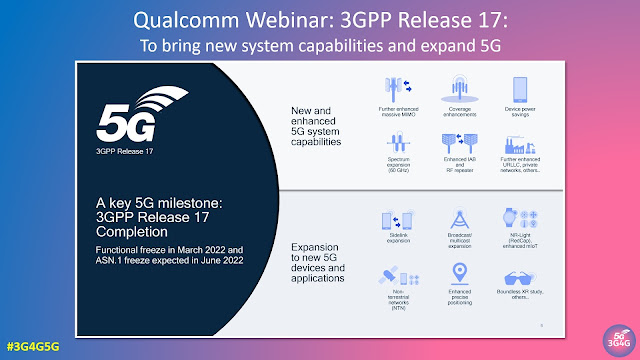The ETSI Artificial Intelligence (AI) Conference – Status, Implementation and Way Forward of AI Standardization – took place from 5-7 February 2024 at ETSI, Sophia Antipolis, France. This in-person event provided a valuable platform for experts and peers to exchange insights, explore demos and posters, and discuss AI and Machine Learning (ML) within the Information and Communications Technology (ICT) sector.
The event agenda is available online, and all presentations can be accessed here.
AI/ML Work in 3GPP: Insights from Dr. Juan Montojo
Dr. Juan Montojo, a leading figure in 3GPP TSG Radio Access Networks (RAN) and rapporteur for the work item Artificial Intelligence/Machine Learning for NR air interface (NR_AIML_air), delivered an insightful presentation titled "Overview of AI/ML related work in 3GPP." His talk covered the current status of AI/ML in 3GPP and prospects as 6G priorities begin to take shape.
Further details are available in the 3GPP post and presentation.
Focus Areas in 3GPP AI/ML Work
Dr. Montojo outlined the critical focus areas for AI/ML within 3GPP:
- Infrastructure and Operator Control: Ensuring that operators maintain control over AI/ML implementations within their networks.
- Performance Monitoring: Establishing standards for monitoring AI/ML model performance, activation, and deactivation.
- Air Interface Extensions: Developing extensions to support AI/ML-specific use cases.
- Data Standards: Defining standardized processes for data collection, AI/ML model transfer, and delivery.
- Testing and Interoperability: Ensuring consistent device behavior and interoperability in AI/ML deployments.
Principles Guiding AI/ML in 3GPP
The AI/ML work in 3GPP is grounded in principles that echo regulatory frameworks like the European Commission’s AI Act:
- Data Security and Integrity: Safeguarding data confidentiality and ensuring integrity.
- Privacy and User Consent: Respecting data privacy and user anonymity, with explicit consent mechanisms.
- Operator Control: Empowering operators with control over data collection, transfer initiation, termination, and management.
- Future-Proof Design: Ensuring the system design is extendable to accommodate future advancements.
AI/ML Training Models: Current Practices and Future Directions
- Off-line Training: Currently, AI/ML models in 3GPP assume off-line training, where models are fully trained before deployment in commercial networks.
- On-line Training and Federated Learning: Future 6G developments may introduce on-line training. 3GPP WG SA2 is already exploring federated learning to enhance network automation.
Challenges and Opportunities for AI/ML in Cellular Networks
Dr. Montojo emphasized both the strengths and limitations of AI/ML in cellular networks:
- Strengths: AI/ML excels in tackling complex, non-linear problems that traditional methods struggle with. It enhances localized, data-driven decision-making.
- Challenges: High energy consumption remains a concern for both network and device sides. Standardization must balance flexibility with technical consistency.
The Path Forward: AI/ML in 6G
AI/ML is expected to become pervasive in 6G, influencing all aspects of system design and operation. Notable expectations include:
- Rel-21 Specifications: AI/ML will be incorporated from the outset, supporting evolving use cases and dynamic requirements.
- Flexible Standardization: Future specifications may be less rigid, enabling AI/ML to drive optimization through data-driven parameterization.
Conclusion
AI/ML's integration into 3GPP workstreams is advancing steadily, laying the groundwork for significant contributions to 6G networks. While AI/ML models themselves are not being standardized, the supporting frameworks around data collection, model management, and interoperability are set to shape the future of cellular technology.
For anyone invested in AI/ML's role in telecoms, understanding these foundational steps is essential as we move towards a more automated, intelligent, and adaptable network landscape.
Related Posts
- The 3G4G Blog - Lessons from ANRW ’24: AI and Cloud in 5G/6G Systems
- The 3G4G Blog: RAN, AI, AI-RAN and Open RAN
- The 3G4G Blog: 3GPP Release 18 Description and Summary of Work Items
- The 3G4G Blog: AI/ML and Other ICT Industry Trends in the coming decades
- The 3G4G Blog: Presentations from 2nd IEEE Open RAN Summit
- The 3G4G Blog: AI/ML Enhancements in 5G-Advanced for Intelligent Network Automation
- The 3G4G Blog: What Is the Role of AI and ML in the Open RAN and 5G Future?
- The 3G4G Blog: 5G-Advanced Flagship Features
- Free 6G Training: Role of AI/ML in 6G RAN - B6GS 2024
- Free 6G Training: Prof. Emil Björnson Explains The Role of AI in 6G Networks?


























